Abstract: In order to deeply research and apply the vehicle Internet of Things technology, starting from the definition of the Internet of Things, adopting the Bluetooth core technology, through the experiment and summary, the intelligent development of the car and the application of the Bluetooth technology are closely linked, and the Bluetooth "shake control" is used as the cut-in. Point, further research and development of Bluetooth potential expansion applications, obtained the application scenario of the vehicle IoT, profoundly revealed the Bluetooth-based automotive IoT application and technical solutions, obtained the important technical support of the automotive IOT, the information coverage is large, the application It has the characteristics of low development cost, flexible application, safe and reliable technology.
Keywords: Bluetooth technology; automobile IOT; smart car; intelligent transportation
0 Introduction The Internet of Things is also known as the sensor network in the world. To some extent, it is another wave of information industry after computers, the Internet and mobile communications. If you put small watches, keys, luggage items, cars, bridges, buildings, and these objects into a miniature sensor chip, you can make it "smart", and then use the wireless network technology to make people and things, Things and things are "conversation" and "communication". This is the Internet of Things.
The Internet of Things has a wide range of uses and can be applied to urban public safety, industrial safety production, environmental monitoring, intelligent transportation, smart home, public health, health monitoring and other fields. On more occasions, people can enjoy safer, more convenient and convenient. life.
As far as the description of the Internet of Things is concerned, the key technologies involved are: sensor technology, identification technology, computing technology, software technology, nanotechnology, embedded intelligent technology. If there is no breakthrough in these technical fields, it will restrict the application and development of the Internet of Things.
In recent years, the consumption of automobiles has become a high-speed growth trend. Due to the backward development of roads and the low management level, urban congestion is very serious. Under the concept of Internet of Things, the application of vehicle-to-use technology will contribute to the intelligent level of urban traffic management. Improve and effectively improve urban traffic conditions.
Bluetooth technology includes sensor technology, identification technology, mobile communication technology, etc. These technologies are closely related to the Internet of Things. Therefore, Bluetooth has a very broad prospect for automotive Internet of Things in intelligent transportation.
1 Technical characteristics of Bluetooth In May 1998, five famous manufacturers such as Sweden Ericsson, Finland Nokia, Japan Toshiba, IBM and Intel Corporation proposed the concept of Bluetooth technology when jointly expanding the standardization activities of short-range wireless communication technology. Bluetooth operates above the unlicensed 2.4 GHz industrial band (SIM) (China's frequency range is 2 400.O to 2 483.5 MHz). Bluetooth has a bandwidth of 1 MHz per channel and an adjacent channel center frequency of 1 MHz. To avoid out-of-band emissions and other interference, the upper and lower guard bands are specified to be 3.5 MHz and 2 MHz, respectively. Bluetooth adopts frequency hopping spread spectrum technology, and 79 hopping points are set in the working frequency band. In a time period of 30 s, the usage time of any frequency point does not exceed 0.4 s, and the frequency hopping process is pseudo-random. of. According to the size of the Bluetooth radio frequency, it can be divided into three power levels, that is, 1 level power 100 mW, 2 level power 2.5 mW, and 3 level power 1 mW. These features of Bluetooth technology can better assume the intelligent sensing and piconet mobile communication functions of the Internet of Things, and are especially suitable for the concept and technical requirements of automotive IoT.
Each computer network card has a media access control address, the MAC address, which distinguishes the source and destination of the data on the network. Similarly, each Bluetooth transceiver in the world is uniquely assigned a 48-bit Bluetooth device address that complies with the IEEE 802 standard. The address space of the Bluetooth device address is 232 (about 4.29 billion). Each Bluetooth device manufacturer has the right to number the products it produces. It can be considered that the Bluetooth device addresses in the world are unique. This provides technical solutions for wireless identification of automotive IoT users, such as car positioning and car identification. , car information inquiry, car non-stop payment, car remote control door and ignition, car anti-theft and so on.
2 Bluetooth application in smart cars
2.1 Bluetooth-based car IoT Bluetooth technology has attracted more than a decade of attention. In recent years, the application prospect of Bluetooth technology in the field of intelligent transportation of the Internet of Things is very promising. The vehicle electronic system is developing in the direction of intelligence, information and network. The automobile market has become an important growth point of China's economy. Wireless communication technology has broad application prospects in mobile systems such as automobiles. At first, Bluetooth technology was mainly used in the telephone communication of automobiles. But as research and applications continue to deepen, there will be more Bluetooth applications in automotive intelligence: such as remote vehicle condition diagnosis, vehicle safety systems, vehicle-to-vehicle communication, multimedia downloads, and more. These are the initial concepts of IoT smart cars. The automobile Internet of Things is an area that is highly valued by various countries and countries. In October 2010, the European Union invested 300 million euros to research smart cars. Smart cars use many sensor technologies. Some cars use more than 200 sensors. More and more, each component of these sensored cars needs to be connected to the network, so the car can use the background alarm when running, showing which place will be faulty, and can reduce the car rear-end, solve the waiting time and exhaust Issues such as emissions, this is intelligent transportation and an indispensable part of a “smart†city. Bluetooth can fully assume the role of sensor, its miniaturization, high integration, sleep function, cheap, openness is the basic characteristics of wireless transmission of sensors. To sum up, the current application scenarios of Bluetooth technology in automobiles are concentrated in the following aspects.
2.2 Application Scenario Speakerphone When the user enters the car, the car system will automatically connect to the user's mobile phone. During driving, the user can use voice control to complete dialing, answering, hanging up and volume adjustment without manual operation. The full-duplex hands-free calling can be carried out through the in-car microphone and audio system, which is actually in-car. The Bluetooth device completely constitutes the in-vehicle piconet and realizes information interaction.
Car remote control Users can control various types of switches in the door and car, including the ignition control of the car, in a range of 10 m with a Bluetooth-equipped mobile phone. This application actually utilizes the characteristics of Bluetooth authentication "binding" and Bluetooth address "unique" to enhance the reliability and security of wireless remote control.
Music download Users can download music to their car audio via mobile phone plus Bluetooth. The advantage is the intelligent and high-speed transmission of wireless links.
Electronic navigation Users can download electronic maps and other data to the car GPS navigation system through mobile phones and Bluetooth. The navigation system obtains the current coordinate parameters and transmits them back to the navigation center through Bluetooth mobile phone messages to realize real-time vehicle positioning and navigation.
Auto Auto Fault Diagnosis System The vehicle system can send fault codes and other information to the repair center via mobile phone and Bluetooth. When the repair center sends someone to repair, you can prepare the corresponding accessories and repair tools according to the fault code and other information, and eliminate the fault on site.
Vehicle Location The uniqueness of the Bluetooth address provides a technical solution for vehicle identification and location. First of all, the Bluetooth on the car can be used as a reference through fixed objects with Bluetooth devices around it, such as roadside signs, street lights, bridges, buildings, etc., and then the electronic map confirms its exact location. Secondly, a network composed of Bluetooth piconet plus mobile communication can find car location information in real time when needed.
Car congestion At present, car congestion in the big cities has become a very prominent problem, especially in China, it has reached the point where non-governance is impossible. In addition to the rapid growth of vehicles, there is no intelligent information platform. Aspect. The Bluetooth chip is cheap and has an address function. Therefore, using Bluetooth to form a piconet in the city can quickly set up the network, thereby realizing the requirements of traffic management informationization with a minimum of funds. On the one hand, the traffic control department can grasp the traffic information through the Bluetooth-equipped car and release it in time (instead of the live video) to realize intelligent management. The car Bluetooth real-time system can prompt the driver to avoid the congested road section to bypass the driving.
2.3 Application Status Delphi Automotive Systems has developed a car Bluetooth device that allows drivers and passengers to use voice control; Toyota, Japan Denso, NTTDOCOMO, Matsushita Electric Industrial Co., Ltd., Nissan Motor Co., Ltd. and Toshiba have jointly developed In-car wireless hands-free specification using Bluetooth technology - "CCAP". With the technical solution of this specification, the mobile phone wirelessly connects the car audio and other devices through the Bluetooth technology, and can construct a more secure call system while driving. Motorola also introduced a Bluetooth-based automotive kit for automakers. With it, the user can control the handheld Bluetooth device to wirelessly communicate with the car device, such as wireless remote control to open the door, remote control ignition, and wireless exchange database with the vehicle detection system. In-vehicle devices with Bluetooth technology will make it easy to download music, videos and send e-mails over the Internet in the car.
However, so far, the pace of adopting Bluetooth technology in automotive electronics is still very slow, and the practical stage of the automotive Internet of Things is far from being formed. The main reason is that the reliability requirements and environmental challenges facing the automotive industry are much higher than other situations. The use of devices, and the initial loyalty of Bluetooth is to solve the problem of connection such as computers, without too much consideration for the harsh environment. From the user's psychological considerations, at least more than 100,000 purchased cars are generally difficult to tolerate some small equipment failures, but these problems are acceptable for ordinary equipment systems. The reality is that when the car is driving, it will encounter uneven road surface, the vibration is very strong, and sometimes the dust is also very large. At the same time, the temperature may also vary greatly. Under different external environments, the temperature variation inside and outside the vehicle may range from -40 to 50 °C, which is very unfavorable for in-vehicle electronic equipment. Fortunately, many Bluetooth chip manufacturers have complied with the expansion and application of Bluetooth technology, research and development of a new version of the Bluetooth chip, making the Bluetooth chip more adaptable, the application of Bluetooth technology will be more extensive. For example, CSR has launched the sixth generation BlueCore Bluetooth chip. BlueCore6 delivers industry-leading radio performance and low power consumption, and fully supports the latest Bluetooth specification (v2.1+EDR). BlueCore 6 includes CSR's AuriStream technology, which delivers higher voice quality and a 40% reduction in BlueCore6-ROM power consumption compared to standard Bluetooth voice transmission.
This study explores the secondary development of Bluetooth from Bluetooth car door control and car ignition control and blocking. The basic framework of the application is: Bluetooth remote control as the master device, Bluetooth slave device placed in the door control circuit and ignition switch In the circuit, the controller can issue two commands, namely the door opening and the fire point remote control blocking. Since the matching adopts the "binding" method, the connection speed is greatly improved, the malfunction is reduced, the reliability is enhanced, and it is generally difficult to intercept the wireless signal. At the same time, the Bluetooth device can keep in contact with the mobile phone to form an alarm system. The circuit diagram is shown in Figure 1.
This article refers to the address: http://
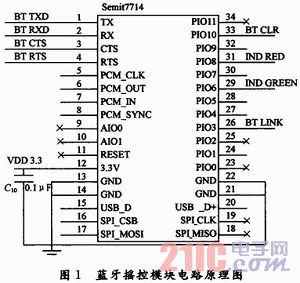
The Bluetooth chip model is: CSR BC4 (v2.0 + EDR), 8 MbFLASH, with PIO0 ~ PIO11, AIO0, A101, USB, PCM, UART and SPI interface, module built-in 8 Mb FLASH, powerful, user-customizable software For a variety of Bluetooth applications. On-board antenna for embedded applications, Bluetooth version v2.0, compatible with v1.2, USB protocol USB 1.1, compatible with USB 2.0 (full speed mode), its main technical indicators are: frequency 2.4 GHz (ISM band); modulation method GFSK (Gaussian Frequency Shift Keying); transmission power ≤ 4 dBm, Class II; sensitivity ≤ -84 dBm @ 0.1% BER; communication rate Asynchronous: 723.2 Kb / s, (Max) / 57.6 Kb/s Synchronous: 433.9 Kb/s/433.9 Kb/s; security features: Authentication and encryption; application framework supports HFP 1.5, HFP 1.0, SPP, etc.; power supply is 3.3 V; working temperature is -20 ~ +55 °C.
3 Conclusion The automotive Internet of Things application based on Bluetooth technology has obvious advantages, has been highly valued abroad, and applications continue to deepen. However, the research and application in this area in China is progressing slowly. Even the application of Bluetooth in automotive electronics is only a matter of concept. The electronic system on the car is basically the original solution, which provides a broad space for the technical application of Bluetooth. According to the plan of the Ministry of Industry and Information Technology, the automotive Internet of Things project has been listed as a major special project in China, and will receive financial support funds. During the “Twelfth Five-Year Plan†period, the Ministry of Industry and Information Technology will start from various aspects such as industrial planning and technical standards to increase the number of in-vehicle information services. Support efforts to promote the full spread of the automotive Internet of Things industry. Therefore, by absorbing the application mode of similar products abroad, exploring the application scenarios, application value, application environment, application circuit and function realization of Bluetooth technology in the vehicle Internet of Things, it is forward-looking and practical, and will achieve good economic benefits. . Using "Bluetooth Technology + 3G Mobile Communication Technology" to realize "sensing", "recognition", "no parking fee", "precise positioning", "fault diagnosis", "piconet composition", "information" of automobile Internet of Things Compared with conventional electronic devices, the functions of “transmission†and “interaction†are integrated, intelligent, reliable, anti-interference, safe, easy to implement, cost-effective, and easy to network and intelligent in the future. And many other advantages.
We are manufacturer of Wireless Charger in China, if you want to buy Wireless Charger Pad, Wireless Charger Stand, Wireless Car Charger,Fantasy Wireless Chargercharger from Us-your trustful Supplier & Manufacturer in China.Wireless charger no cables or Usb interface required.Look forward to your cooperation!
Starts the moment you place down any Qi-enabled device or device equipped with a Qi-compatible cover. Wireless charger no cables or Usb interface required. The wireless charger provides over-voltage, under-voltage, short-circuit protection to ensure safety for your cell phone. Qi wireless charger with universal compatibility for all QI enabled wireless charging devices or devices with QI receiver.Wireless charger has led light clearly indicates the standby status and charging.
Wireless charger pad
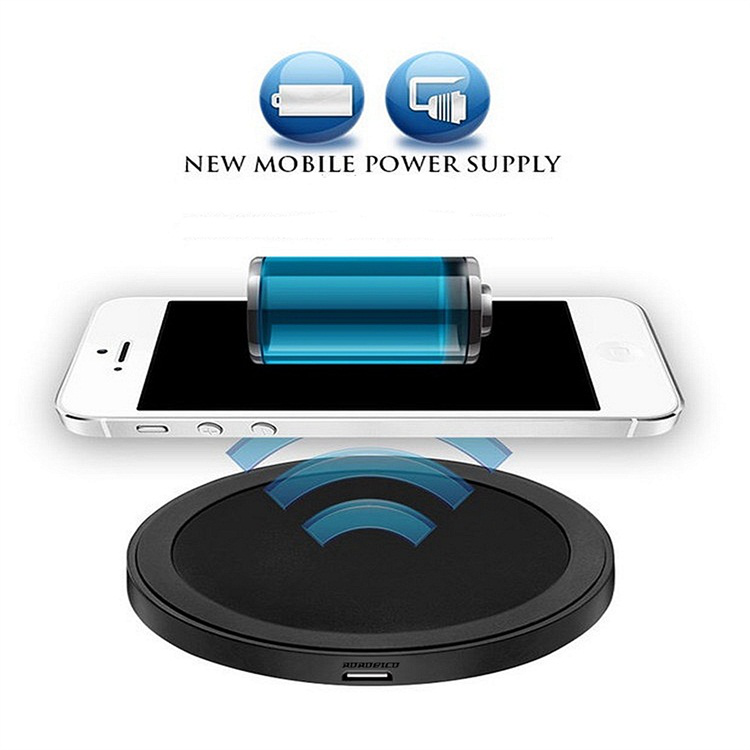
Wireless Charger Stand
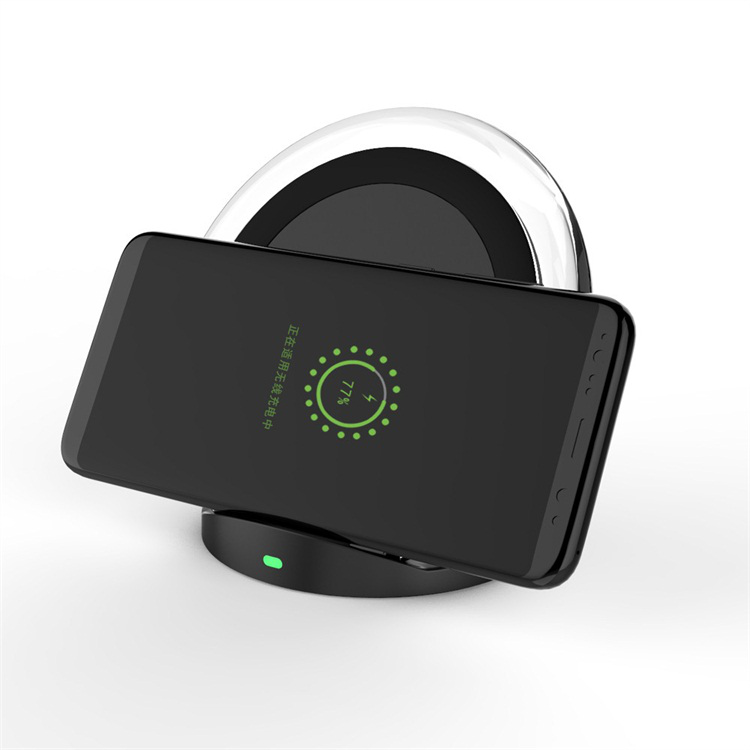
Breathing wireless charger
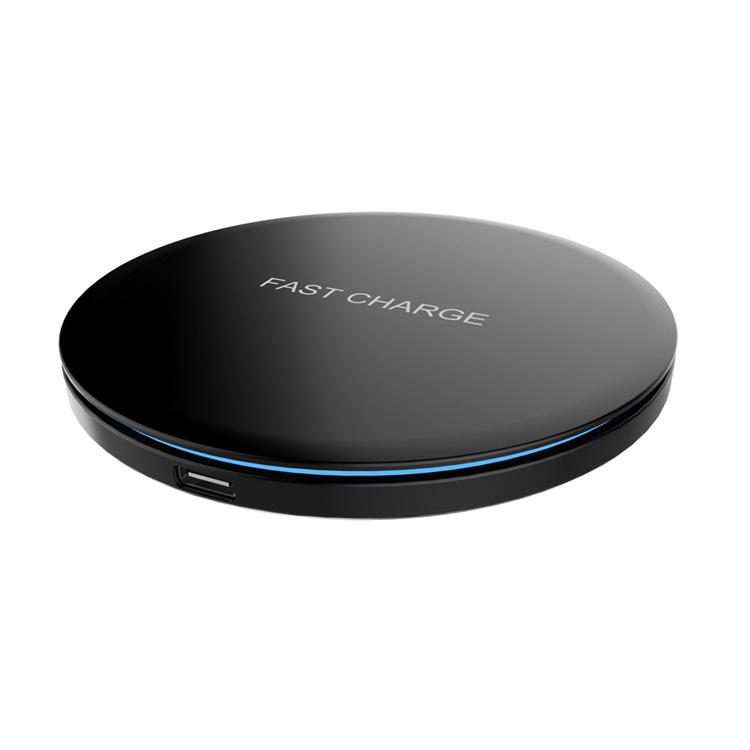
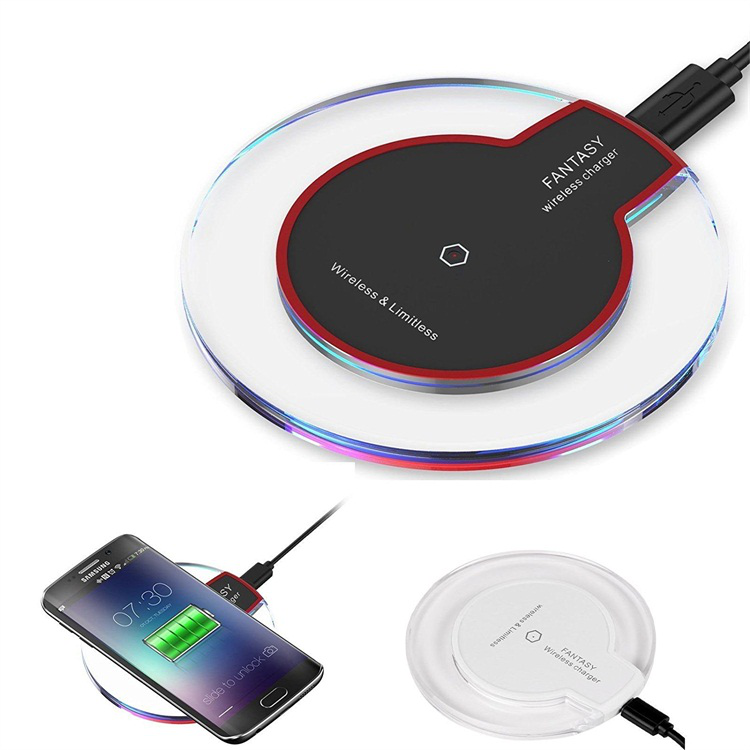
Wireless car charger
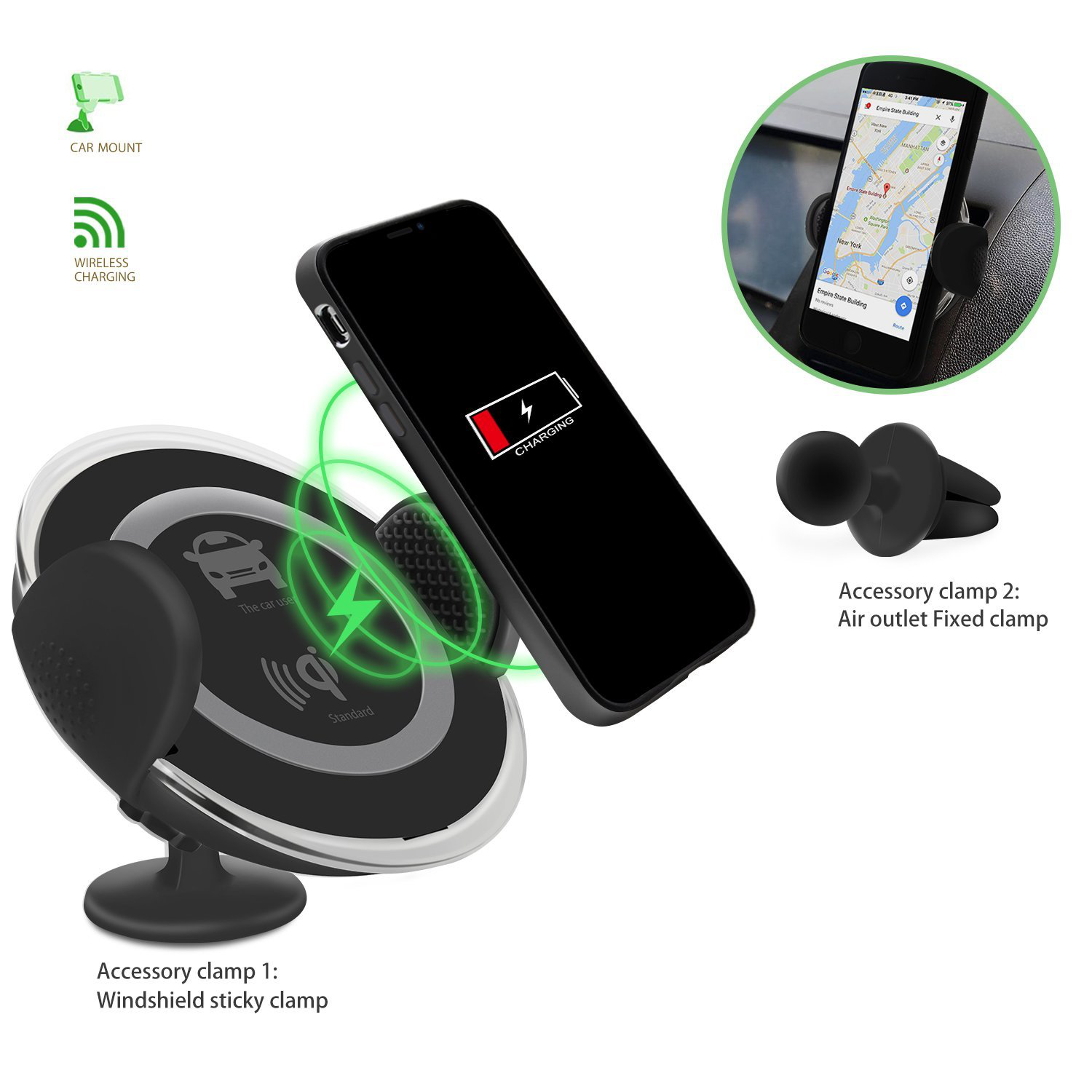
Wireless charger with holder

Fast wireless charger
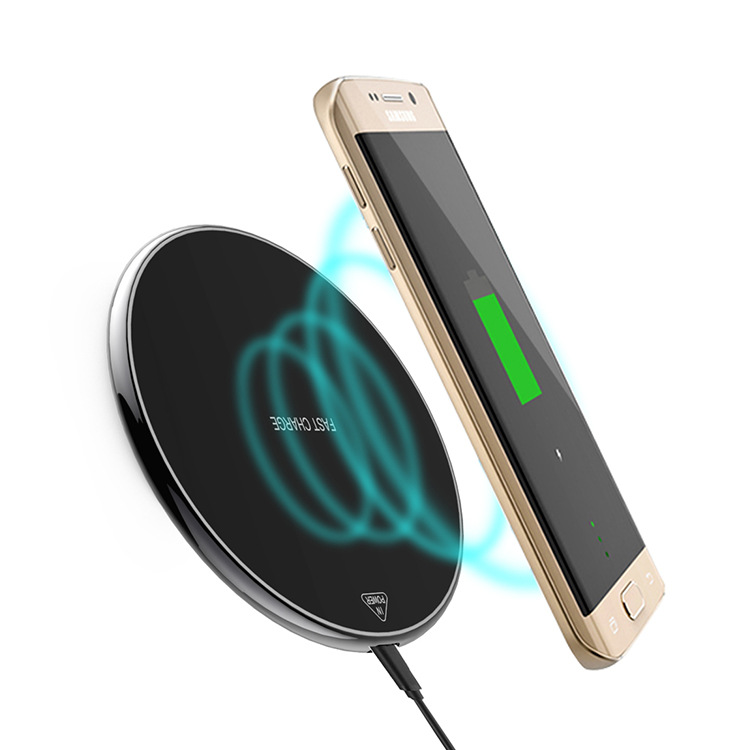
Wireless Charger
Wireless Charger,Fantasy Wireless Charger,Wireless Charger Stand,Wireless Car Charger
Reteck Storage Device Co., Ltd. , http://www.reteck.com